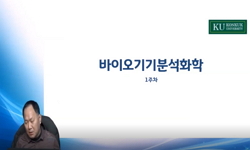Background/Aims: Recently, to lower the production costs and risk of infection, new disposable biopsy forceps made using simple manufacturing techniques have been introduced. However, the effects of the manufacturing techniques are unclear. The aim of...
http://chineseinput.net/에서 pinyin(병음)방식으로 중국어를 변환할 수 있습니다.
변환된 중국어를 복사하여 사용하시면 됩니다.
- 中文 을 입력하시려면 zhongwen을 입력하시고 space를누르시면됩니다.
- 北京 을 입력하시려면 beijing을 입력하시고 space를 누르시면 됩니다.
https://www.riss.kr/link?id=A106171592
- 저자
- 발행기관
- 학술지명
- 권호사항
-
발행연도
2019
-
작성언어
English
- 주제어
-
등재정보
KCI등재,SCIE
-
자료형태
학술저널
- 발행기관 URL
-
수록면
530-538(9쪽)
-
KCI 피인용횟수
0
- DOI식별코드
- 제공처
- 소장기관
-
0
상세조회 -
0
다운로드
부가정보
다국어 초록 (Multilingual Abstract)

Methods: By using an in vitro nitrile glove popping model, we compared the popping ability among eight different disposable biopsy forceps (one pair of biopsy forceps with cups made by a cutting method [cutting forceps], four pairs of biopsy forceps with cups made by a pressing method [pressing forceps], and three pairs of biopsy forceps with cups made using a injection molding method [molding forceps]). Using an in vivo swine model, we compared the penetration depth and quality of specimen among the biopsy forceps.
Results: In the in vitro model, the molding forceps provided a significantly higher popping rate than the other forceps (cutting forceps, 25.0%; pressing forceps, 17.5%; and molding forceps, 41.7%; p = 0.006). In the in vivo model, the cutting and pressing forceps did not provide larger specimens, deeper biopsy specimen, and higher specimen adequacy than those obtained using the molding forceps (p = 0.2631, p = 0.5875, and p = 0.2147, respectively). However, the molding forceps showed significantly more common crush artifact than the others (cutting forceps, 0%; pressing forceps, 5.0%; and molding forceps, 43.3%; p = 0.0007).
Conclusions: The molding forceps provided lower performance than the cutting and pressing forceps in terms of crush artifact.
Background/Aims: Recently, to lower the production costs and risk of infection, new disposable biopsy forceps made using simple manufacturing techniques have been introduced. However, the effects of the manufacturing techniques are unclear. The aim of this study was to evaluate which types of biopsy forceps could obtain good-quality specimens according to the manufacturing techniques.
Methods: By using an in vitro nitrile glove popping model, we compared the popping ability among eight different disposable biopsy forceps (one pair of biopsy forceps with cups made by a cutting method [cutting forceps], four pairs of biopsy forceps with cups made by a pressing method [pressing forceps], and three pairs of biopsy forceps with cups made using a injection molding method [molding forceps]). Using an in vivo swine model, we compared the penetration depth and quality of specimen among the biopsy forceps.
Results: In the in vitro model, the molding forceps provided a significantly higher popping rate than the other forceps (cutting forceps, 25.0%; pressing forceps, 17.5%; and molding forceps, 41.7%; p = 0.006). In the in vivo model, the cutting and pressing forceps did not provide larger specimens, deeper biopsy specimen, and higher specimen adequacy than those obtained using the molding forceps (p = 0.2631, p = 0.5875, and p = 0.2147, respectively). However, the molding forceps showed significantly more common crush artifact than the others (cutting forceps, 0%; pressing forceps, 5.0%; and molding forceps, 43.3%; p = 0.0007).
Conclusions: The molding forceps provided lower performance than the cutting and pressing forceps in terms of crush artifact.
참고문헌 (Reference)
1 Tytgat GN, "Technicalities of endoscopic biopsy" 27 : 683-688, 1995
2 Yang R, "Prospective, randomized comparison of disposable and reusable biopsy forceps in gastrointestinal endoscopy" 40 : 671-674, 1994
3 Alfa MJ, "Impact of FDA policy change on the reuse of single-use medical devices in Michigan hospitals" 32 : 337-341, 2004
4 O'Connor HJ, "Gastrointestinal endoscopy : infection and disinfection" 24 : 1067-1077, 1983
5 Kaneko E, "Evaluation of the new giant-biopsy forceps in the diagnosis of mucosal and submucosal gastric lesions" 15 : 322-326, 1983
6 U.S. Food and Drug Administration, "Enforcement priorities for single-use devices reprocessed by third parties and hospitals" FDA
7 Birnie GG, "Endoscopic transmission of hepatitis B virus" 24 : 171-174, 1983
8 Ladas SD, "Effect of forceps size and mode of orientation on endoscopic small bowel biopsy evaluation" 40 : 51-55, 1994
9 Danesh BJ, "Comparison of weight, depth, and diagnostic adequacy of specimens obtained with 16 different biopsy forceps designed for upper gastrointestinal endoscopy" 26 : 227-231, 1985
10 Sussman DA, "Comparison of performance characteristics of oval cup forceps versus serrated jaw forceps in gastric biopsy" 61 : 2338-2343, 2016
1 Tytgat GN, "Technicalities of endoscopic biopsy" 27 : 683-688, 1995
2 Yang R, "Prospective, randomized comparison of disposable and reusable biopsy forceps in gastrointestinal endoscopy" 40 : 671-674, 1994
3 Alfa MJ, "Impact of FDA policy change on the reuse of single-use medical devices in Michigan hospitals" 32 : 337-341, 2004
4 O'Connor HJ, "Gastrointestinal endoscopy : infection and disinfection" 24 : 1067-1077, 1983
5 Kaneko E, "Evaluation of the new giant-biopsy forceps in the diagnosis of mucosal and submucosal gastric lesions" 15 : 322-326, 1983
6 U.S. Food and Drug Administration, "Enforcement priorities for single-use devices reprocessed by third parties and hospitals" FDA
7 Birnie GG, "Endoscopic transmission of hepatitis B virus" 24 : 171-174, 1983
8 Ladas SD, "Effect of forceps size and mode of orientation on endoscopic small bowel biopsy evaluation" 40 : 51-55, 1994
9 Danesh BJ, "Comparison of weight, depth, and diagnostic adequacy of specimens obtained with 16 different biopsy forceps designed for upper gastrointestinal endoscopy" 26 : 227-231, 1985
10 Sussman DA, "Comparison of performance characteristics of oval cup forceps versus serrated jaw forceps in gastric biopsy" 61 : 2338-2343, 2016
11 Fireman Z, "Biopsy forceps: reusable or disposable?" 21 : 1089-1092, 2006
동일학술지(권/호) 다른 논문
-
Rapid changes in capillary morphology and architecture in a patient with dermatomyositis
- 대한내과학회
- 박성조
- 2019
- KCI등재,SCIE
-
Fever of unknown origin caused by intrathyroidal thymic carcinoma
- 대한내과학회
- 정승민
- 2019
- KCI등재,SCIE
-
- 대한내과학회
- 권정혜
- 2019
- KCI등재,SCIE
-
- 대한내과학회
- Chun Zhang
- 2019
- KCI등재,SCIE
분석정보
인용정보 인용지수 설명보기
학술지 이력
| 연월일 | 이력구분 | 이력상세 | 등재구분 |
|---|---|---|---|
| 2023 | 평가예정 | 해외DB학술지평가 신청대상 (해외등재 학술지 평가) | |
| 2020-01-01 | 평가 | 등재학술지 유지 (해외등재 학술지 평가) |  |
| 2011-01-01 | 평가 | 등재학술지 유지 (등재유지) |  |
| 2008-01-01 | 평가 | 등재학술지 선정 (등재후보2차) |  |
| 2007-01-01 | 평가 | 등재후보 1차 PASS (등재후보1차) |  |
| 2005-01-01 | 평가 | 등재후보학술지 선정 (신규평가) |  |
학술지 인용정보
| 기준연도 | WOS-KCI 통합IF(2년) | KCIF(2년) | KCIF(3년) |
|---|---|---|---|
| 2016 | 1.37 | 0.26 | 1.02 |
| KCIF(4년) | KCIF(5년) | 중심성지수(3년) | 즉시성지수 |
| 0.83 | 0.73 | 0.566 | 0.13 |





 KCI
KCI KISS
KISS







